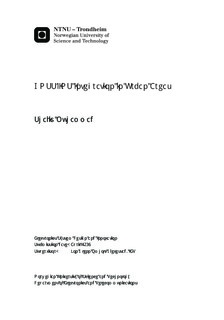GNSS/INS Integration in Urban Areas
Master thesis
Permanent lenke
http://hdl.handle.net/11250/2370962Utgivelsesdato
2014Metadata
Vis full innførselSamlinger
Sammendrag
The Satellite based navigation systems are often integrated with inertial navigationsystems in order to provide greater accuracy and reliability in the positionand velocity parameters. For this purpose high quality inertial sensors are usedwhich can provide real-time navigation at centimeter level. Price, size and weightof traditional INS has been a problem which has been solved successfully by theuse of Micro Electro Mechanical Sensors (MEMS). The problem with the MEMStechnology is the large error which grows rapidly and degrade the performanceof the navigation system. Different methods are used to calculate the error coefficients(not implemented in this study work) which are further used in a kalmanfilter in order to enhance the performance of the system. Thus a kalman filterhas been introduced to perform the data fusion algorithms. Kalman filtering is arecursive technique used to optimize the state vector of the estimates and it efficientlyprovides the navigation estimates of a dynamic system. All the navigationdata used in this thesis work has been provided by my supervisor, professor JonGlenn Gjevestad (UMB). A real-time system has been tested in the urban areasfor different scenarios. Kalman filter approach with loose integration has been implemented.A comparison of the filtered solution with the reference positions hasbeen made by introducing a 2D horizontal position error in order to analyze theposition accuracy. In the end some recommendations on future work are courted.
